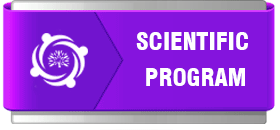Sankalp, Raj Kumar Yadav
post graduate in Physiology from All India Institute of Medical Sciences, New Delhi, India.
Title: Effect of Short-Term Yoga-Based Ocular Exercises in Patients with Glaucoma
Biography
Biography: Sankalp, Raj Kumar Yadav
Abstract
Abstract
Ciliary muscle contraction (accommodation) and relaxation (de-accommodation) affects aqueous humour outflow through both trabecular and uveoscleral pathway. Yogic ocular exercises (eye rolling movement) has been shown to decrease intra-ocular pressure (IOP) in healthy individuals (Dimitrova et al., 2017). Tratak Kriya is an ocular exercise involving accommodation and de-accommodation. The primary objective of this study was to assess the effect of Yogic ocular exercises including Tratak kriya on IOP in glaucoma at day 28, using randomized controlled trial study design.
Methodology: Glaucoma patients of both gender (n=103, 18-60 yrs) with controlled hypertension and diabetes, on regular medication for glaucoma, were included. The medications were same at least for last 1 month before enrollment, and had visual acuity of >6/60. The patients were randomized into group A and group B after their informed consent. Those with history of acute angle closure or retinopathy were excluded. Both groups continued their standard medical care and group B patients performed yogic intervention as add on therapy, 1 hour per day for 4 weeks. The IOP and quality of life (QoL) were assessed using Non contact tonometry and WHOBREF score respectively. Results: Compared to baseline, after 4 weeks, IOP was reduced in both eyes, significantly in right eye (p<0.005) in group B, while there was no reduction in IOP in the group A. Also, in comparison to group A, there was significant change of IOP from baseline in group B patients in both eyes, right (p<0.0005) and left (p<0.05). At day 28, there was significant (p<0.005) change in average WHOBREF QoL score of patients in group B vs group A. Conclusion: Yogic ocular exercises including Tratak kriya might be effective in reducing IOP in glaucoma patients. Further large studies are needed before prescribing it to glaucoma patients as add on therapy.

